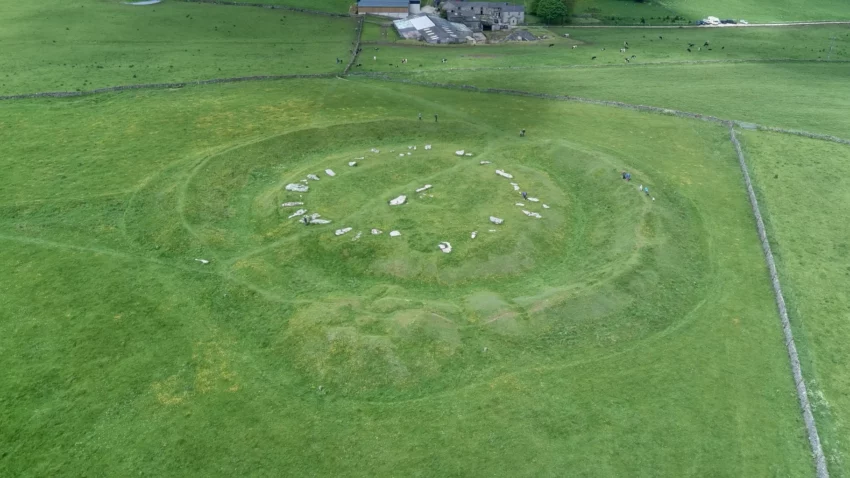Arbor Low: A Neolithic Henge Monument
Around 4,500 years ago, the Neolithic people of the time built an extraordinary stone circle on this hilltop. They surrounded it with a huge ditch and bank. This special location served as a gathering place for ceremonies.
Get your dose of History via Email
What is Arbor Low?
Arbor Low is a well-preserved Neolithic henge in the Derbyshire Peak District, England. It lies on a Carboniferous Limestone plateau known as the White Peak area. The monument consists of a stone circle surrounded by earthworks and a ditch.
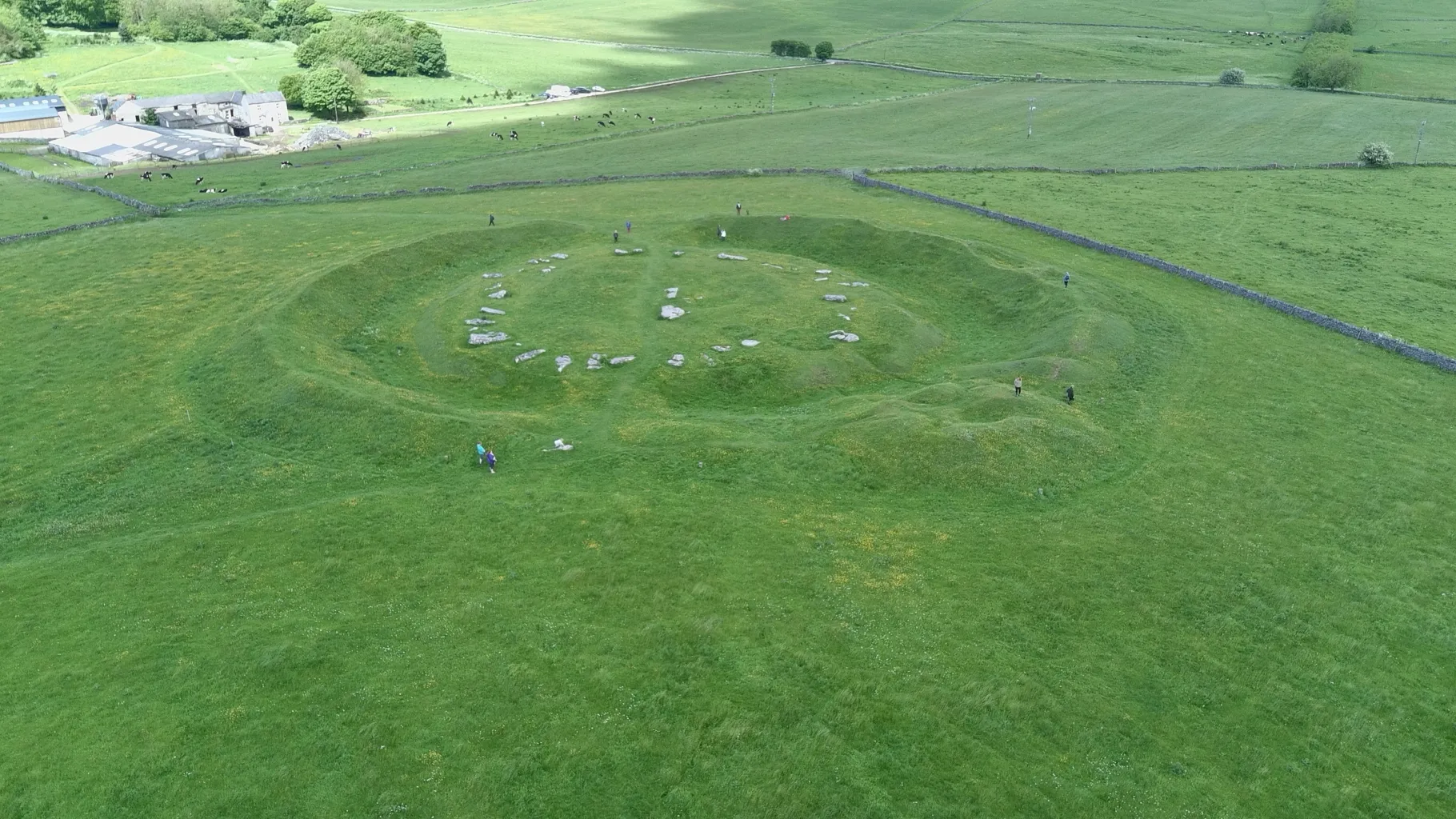
Henge Details
The monument includes about 50 large limestone blocks, forming an egg-shaped circle. Originally, there were probably 41-43 stones, but some are now in fragments. They range in size from 1.6 to 2.1 meters, with monoliths between 2.6 and 2.9 meters. One stone is partially upright; the rest lie flat. Although often stated otherwise, the stones may have originally stood upright in shallow stone holes.
The Cove
In the center of the circle lie at least six smaller blocks known as the cove, originally believed to have been set in a rectangle.

Earthworks and Entrances
The stones are surrounded by an earth bank, approximately 90 by 85 meters at the outside edges and 2 meters high. The interior ditch is about 2 meters deep and 7 to 10 meters wide. There are two causeway entrances: a northwest entrance 9 meters wide and a southeast entrance 6 meters wide. The inner bank encloses an area of 52 by 40 meters.
Construction and Usage of Arbor Low
The circular bank and ditch of the henge, as well as its two entrances, were probably established in the Late Neolithic period. The stones were added later, sometime before 2000 BCE. The site remained in use until the Bronze Age, when the outer circular bank was reconstructed for the round barrow. Both the earthworks and stoneworks are likely later than the nearby Gib Hill.
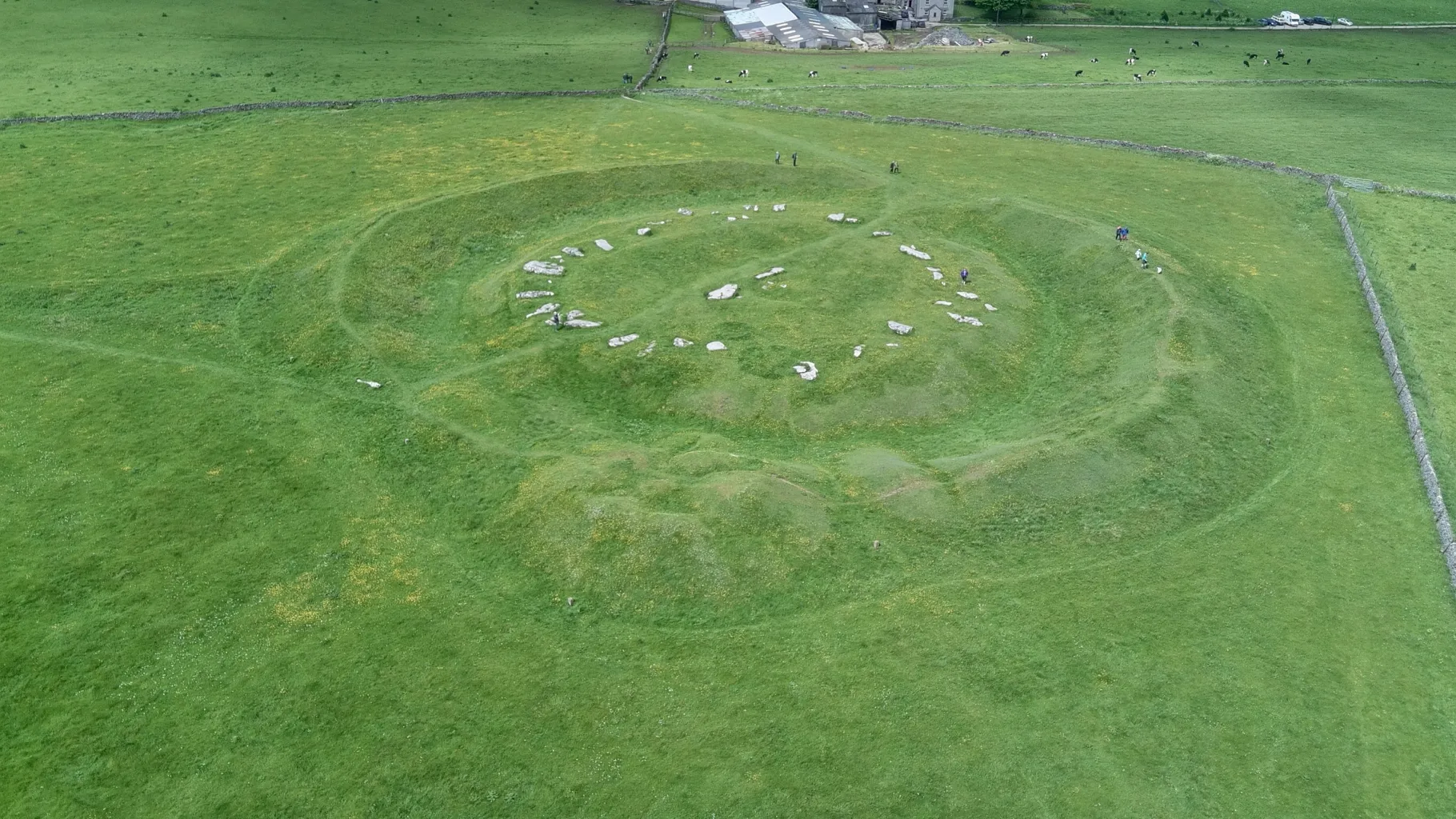
What tools were used?
Neolithic builders dug the ditch using deer antler picks. They piled up the rubble and soil to form a large circular bank, known today as a ‘henge’. In the center, they erected a stone circle of 40 upright limestone slabs, which have since fallen.
Continued Ceremonial Importance
The site remained significant for ceremonial life. Several centuries later, a mound or barrow was created from the henge’s bank. Inside, a stone chamber contained a cremation, two pots, and a bronze pin. Other burials have been found in the center of the stone circle.
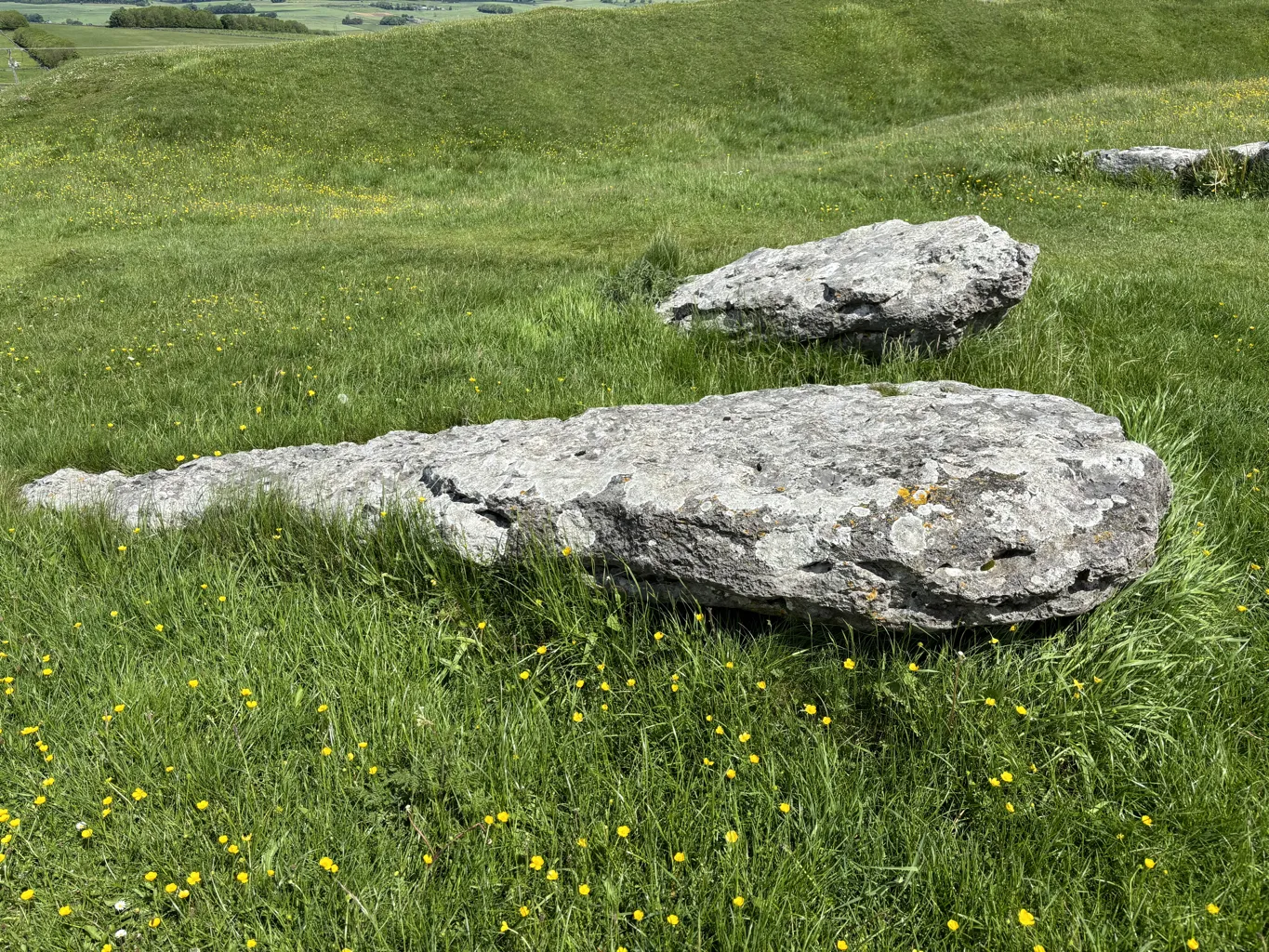
The Cove and Excavations
At the center of the stone circle there was a square arrangement of four stones, known as a ‘cove’. Excavations across the ditch found evidence of fire, animal bones, and flint tools. The most extensive excavations were directed by archaeologist Harold St George Gray in 1901-1902.
A Final Resting Place
Two decorated pots and a bone pin were found with the cremation in the barrow. A flint tool and a lump of iron pyrite, possibly used to light the cremation pyre, were also discovered. The pots found here are early Bronze Age food vessels.
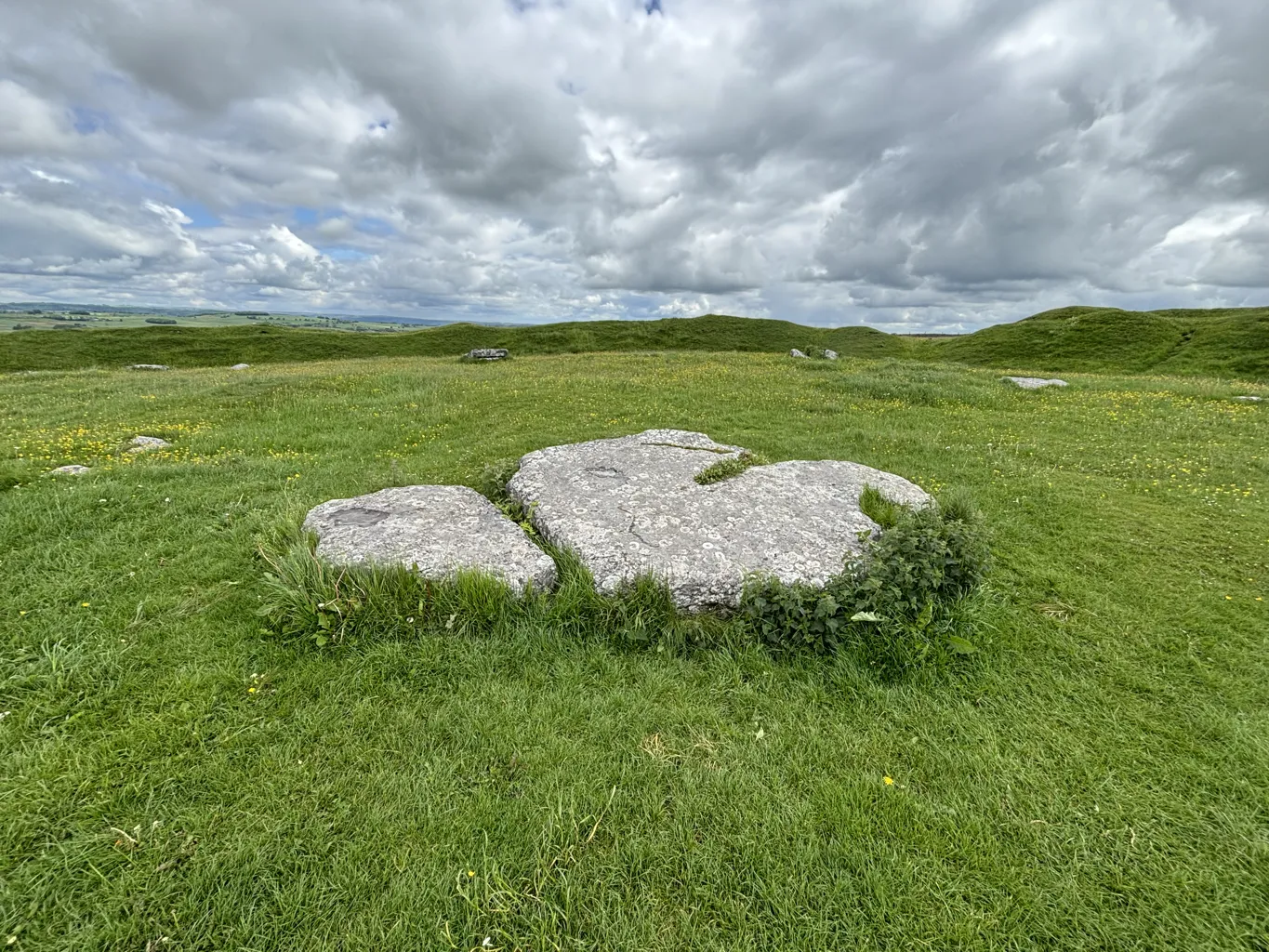
Prehistoric Activity
Many hundreds of stone tools and pieces of worked flint have been found around Arbor Low. These arrowheads date from the early Neolithic, late Neolithic, and early Bronze Age periods. Objects from the site are on display at Buxton Museum and Art Gallery.
Early Heritage Protection
Arbor Low was one of the first archaeological sites preserved under the Ancient Monuments Protection Act of 1882. Stone markers surrounding the monument are carved with the initials VR for Queen Victoria and GR for King George V. A new CR stone for King Charles III replaced a damaged VR stone.
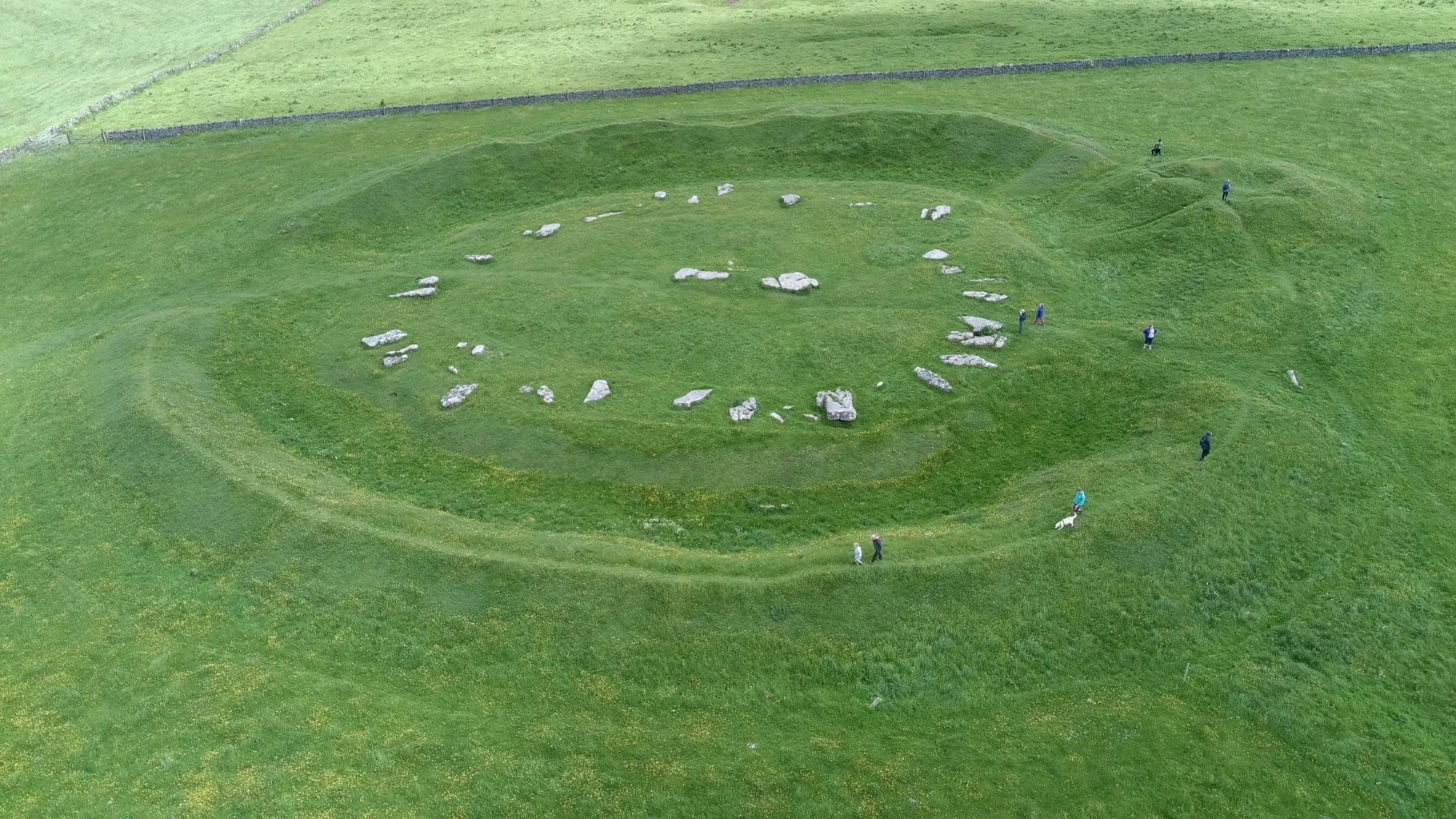
Excavations and Finds
Human skeletal remains were discovered close to the cove during excavations between 1901 and 1902. Other finds included flint scrapers, arrowheads, and bone and antler tools.
Surrounding Landscape
A large Bronze Age round cairn or barrow was built later to the east of the henge, using material from the earth bank. Excavated in 1845, it contained a cremation burial, flint and bone artifacts, and two pots similar to Late Neolithic Peterborough ware, now in Weston Park Museum. Arbor Low is part of a larger complex, linked by an earth ridge to the earlier Neolithic oval barrow in the field next to it. This Neolithic Barrow tomb is called Geb Hill Barrow.
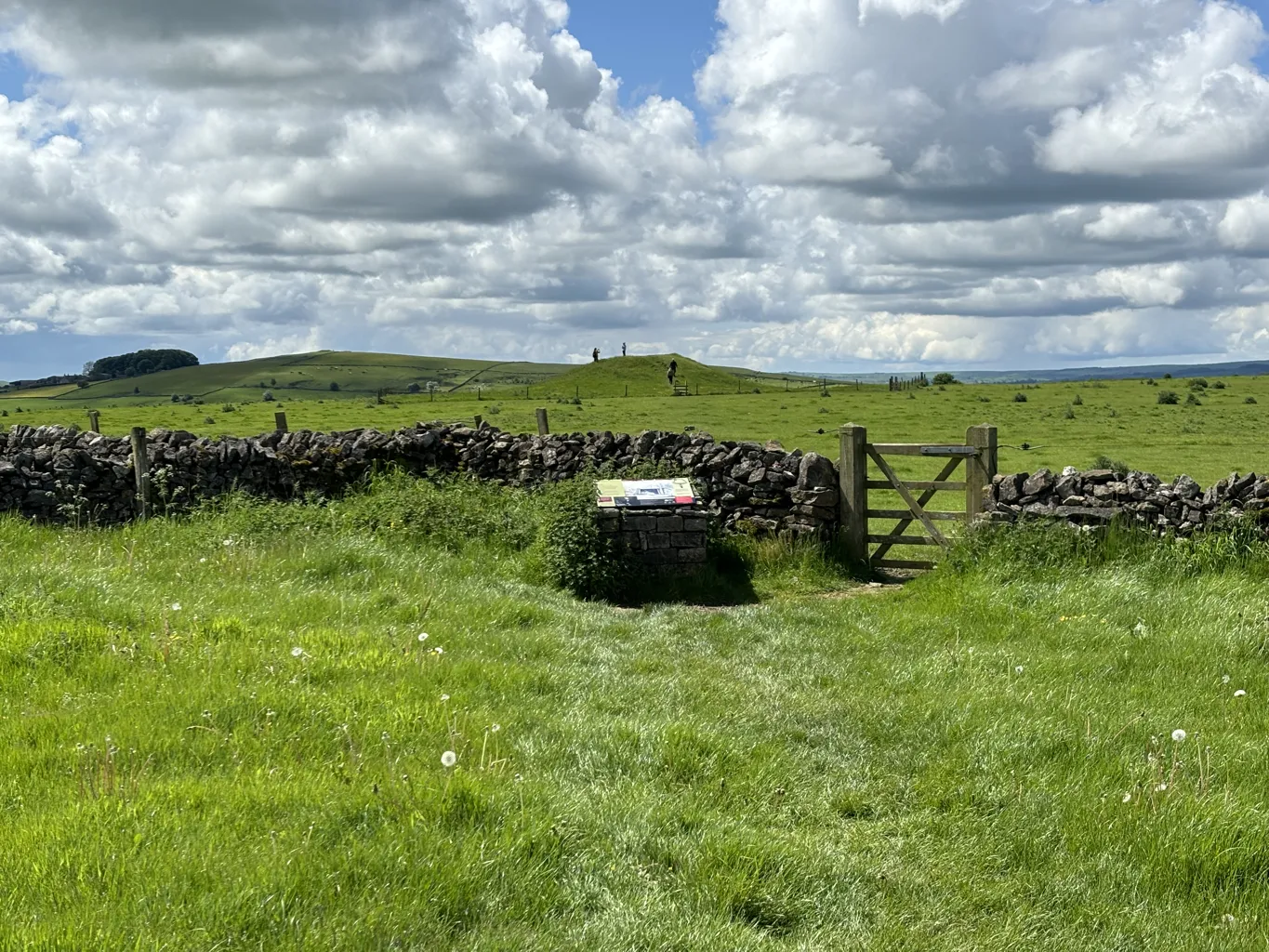
Statutory Protection
Arbor Low was one of the first ancient monuments to receive statutory protection on 18 August 1882. Small stone markers engraved VR and GR still stand around the henge, marking the protected area.
Where is Arbor Low Stone Circle?
The address is Arbor Low Stone Circle and Gib Hill Barrow, Long Rake, Monyash, Derbyshire DE45 1JS.
The henge stands on private farmland but is accessible to the public. You’ll turn into a private road towards the farm house and parking. There is a small-ish car park which is suitable for parking of around 12-15 cars.
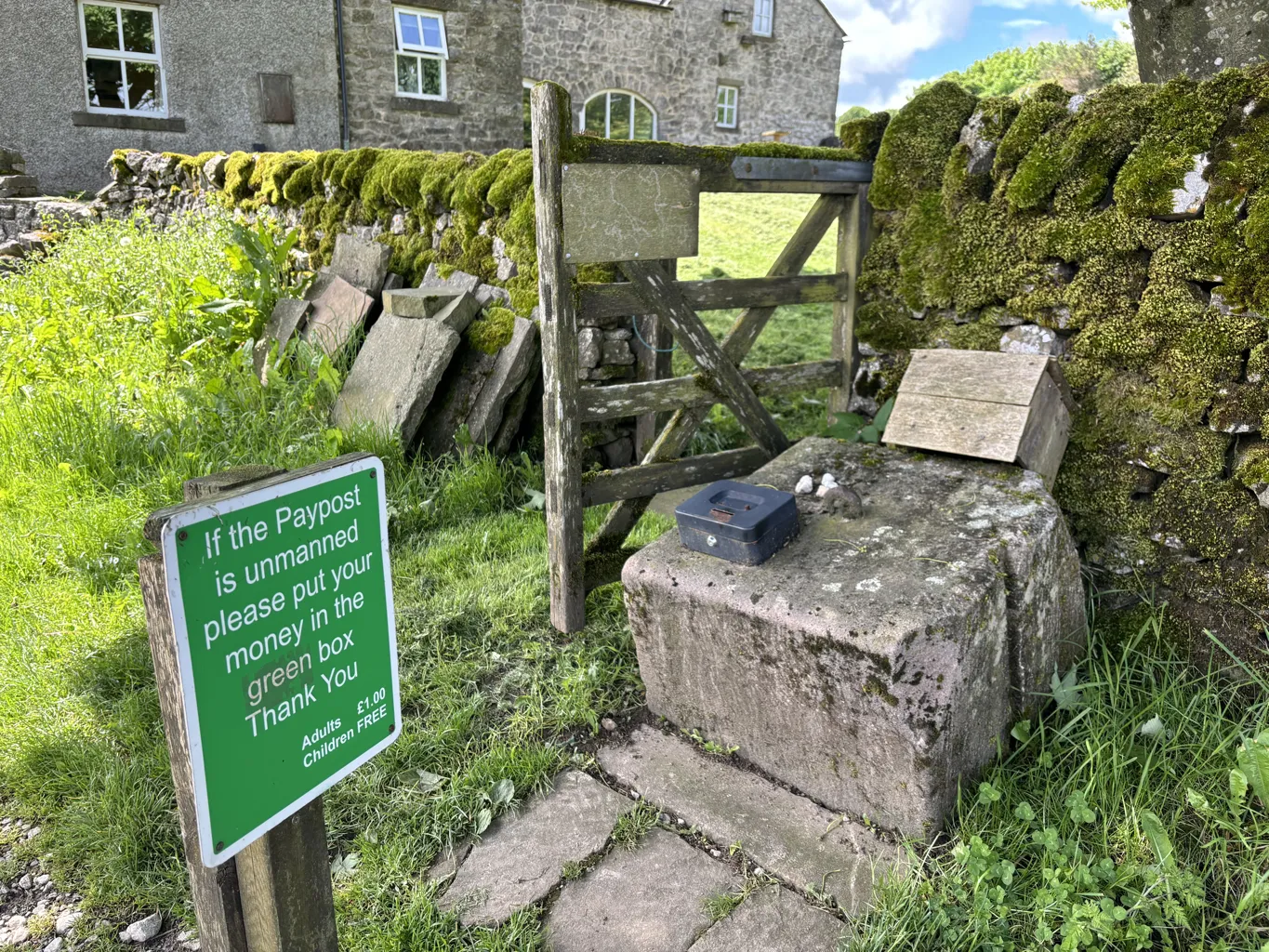
As of May 2024, an entrance fee of £1 per adult is requested. Children can enter free of charge. You can simply pop your pound coin into the metal honesty box if there is no one there to greet you. Ensure you wear suitable foot ware and are not scared of cows as you’ll need to cross a couple of fields to get to it.
If you’re looking to make it a longer day out. Try visiting the Bull Ring Henge too, which is not far away.

Sources:
Signs at the site
Wikipedia


